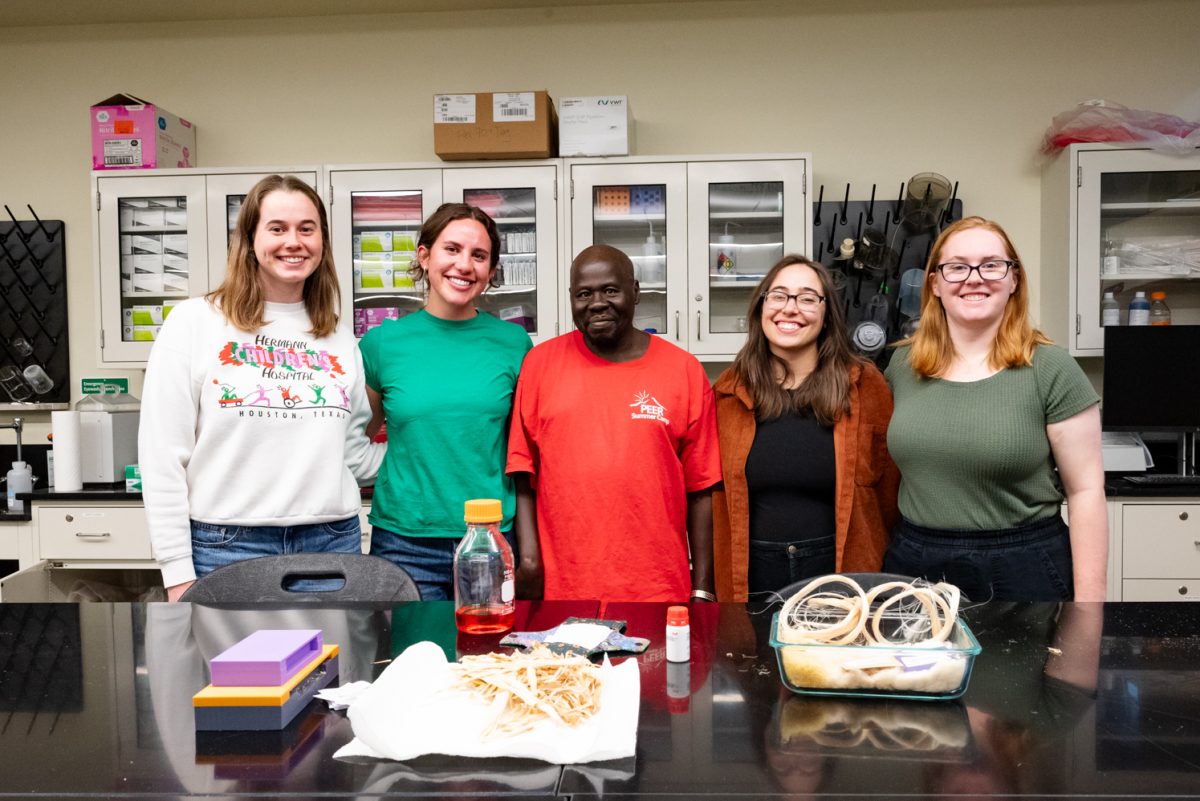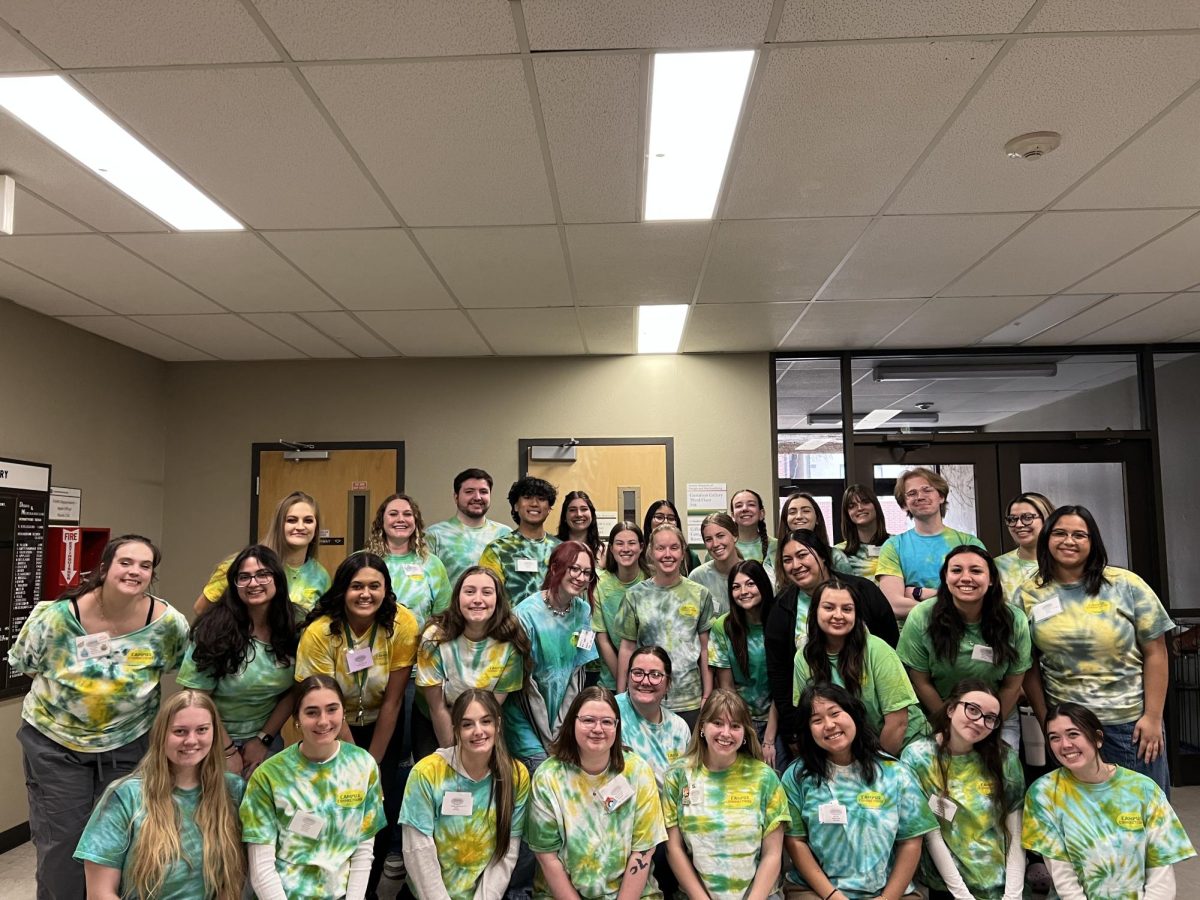
In attempts to understand the universe, associate professor Norm Buchanan looks into one of the most abundant particles of matter.
Buchanan studies high energy particle physics in the area of neutrinos. Neutrinos are sister particles to electrons that do not have a charge. Neutrinos can only be detected when they interact with matter, which they hardly do, because of their lack of charge.
Buchanan is one of about a dozen, national laboratory scientists that have received part of an $8.5 million dollar grant to do computational research on high-energy particle physics. This computational research consists of taking experimental data and fitting it into different theoretical models.
The grant, which Buchanan received from the Scientific Discovery through Advanced Computing, is a big initiative from the Department of Energy to further research in this elementary particle field.
To detect these neutrinos, thousands upon thousands of neutrinos are shot a mile underground at detectors filled with liquid argon at -200 degrees Celsius.
“We need to shoot trillions upon trillions of neutrinos at any type of object for one of them to interact,” Buchanan said.
The detectors are 810 kilometers to 113 kilometers away from the neutrino source. The detectors and neutrino sources are a part of two international projects: the Deep Underground Neutrino Experiment and the Neutrinos from the Main Injector Off Axis Electron-Neutrino Appearance (NOvA).
“DUNE is one of the biggest neutrino projects that has ever existed,” Buchanan said. “There are four detectors in South Dakota a mile underground that are as big as the physics building and hold 40,000 tons of liquid argon.”
The NOvA experiment is the project that Buchanan and his lab are currently working on, while DUNE is in the process of being built and is expected to collect data in the late 2020s. The NOvA experiment, conducted at Fermilab in Chicago with data analyzed at CSU, is a unique opportunity for students to get involved in.
“It’s good to get different kinds of experience,” said Blake Troska, a senior double majoring in computer science and electrical engineering. “This lab has a unique opportunity for engineers that you can’t get in the industry. You get experience that you wouldn’t normally get as an undergraduate.”

For the electron and the particles that make up the proton and neutron, there is a corresponding neutrino.
There are also two other families of matter particles, and each also has a corresponding neutrino: the muon neutrino and the tau neutrino. Muon neutrinos are created in large numbers using a proton beam in this manner, which is why we start with a muon neutrino beam.
The particles resulting from protons smashing into a carbon target are a mix of matter and anti-matter, largely pions and antipions, particles analogous to protons that are half matter and half antimatter.
As the particles move through space, they oscillate, or change, between different flavors of neutrinos: tau, muon or electron. While the neutrinos that are created are normally muons, the muon neutrinos do not always hit the detector as muons.
There is much that is not known about neutrinos, in particular, including how they oscillate differently depending on whether they are neutrinos or antineutrinos.
The oscillations can be described as a linear combination of neutrino masses, or the flavor of neutrino can be described in an assorted addition of known masses. Depending on the distance traveled, the neutrinos will end up as a specific flavor.
Collecting this data on the changes in flavors and distances can give insight into the linear combinations of masses to flavors. Over the past year, most of the oscillation parameters have been determined.
In the last ten years, a lot of these functions have been determined, but there are still gaps in understanding these particles, which can lead to answering more questions about the fundamentals of physics.
“With this research, we’re trying to determine why the universe is made up of matter instead of antimatter,” Buchanan said. “Why after the Big Bang, didn’t the universe just annihilate, like it should have, into low energy photons?”
This passion for understanding the universe is shared among the scientific community, exampled by the Department of Energy’s initiative to give grants to particle physicists and professors educating undergraduate and graduate students about these questions. According to Buchanan, studying neutrinos is one of the best ways to answer these questions.
“I worked in other fields, but they couldn’t hold my interest,” said Paul Rojas, a sixth-year graduate student in Buchanan’s lab. “I was trying to find out why that was when I remembered what got me into physics. I’m trying to learn about the universe. There’s a lot of unanswered questions about the universe that particle physics and neutrinos could answer.”
Collegian news reporter Julia Trowbridge can be reached at news@collegian.com or on Twitter @chapin_jules.








